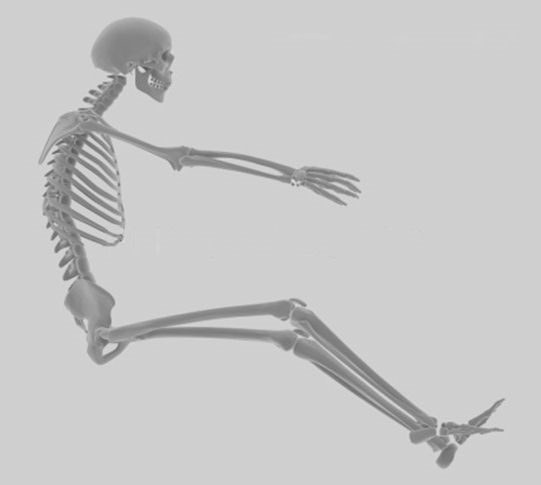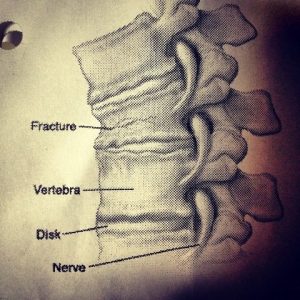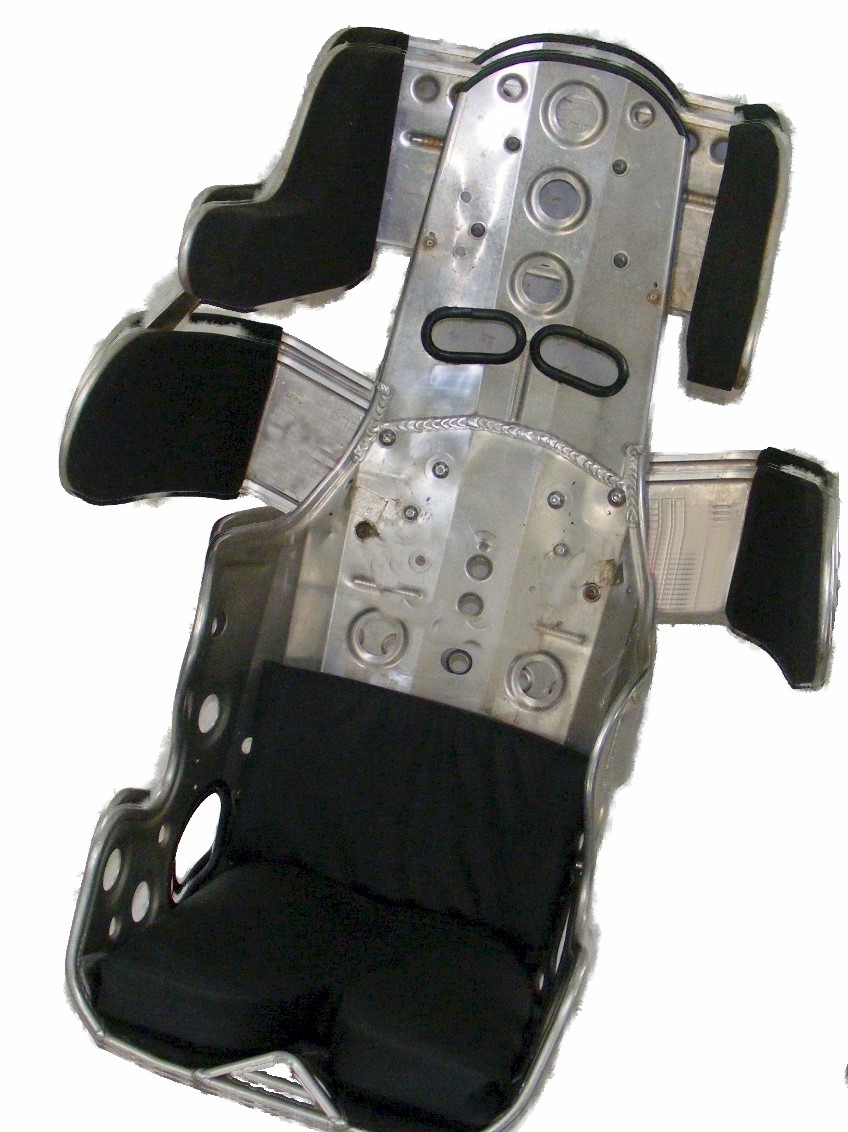Deeper Analysis
Here is what you look like seated in driving position. Now put a hard aluminum seat bottom under your pelvis and spine and belt yourself tight to that rigid seat bottom. Notice that your spine is larger in your lower back and smaller at your neck. Your neck does not have any other body structures around it to absorb an impact.
Your head weighs 12 to 15 pounds on average and a helmet weighs about 5 lbs. That's 20 pounds, the weight of a bowling ball. Think of the impact a moving bowling ball has on the stationary pins at a bowling alley. Think of dropping a bowling ball on your foot from waist high! That's the kind of impact that compresses the spine when the frame hits the track stops dead, and your neck has the weight of a bowling ball on top of it.


The harder the impact, or the higher you fly, or the faster you are going when you hit the ground, the more your head weighs in relative terms. A 10 G impact multiplies the weight by 10 times, or it is like having a 200 pound head, pile driving your spine. The thing is that the G's will multiply impact forces, but the strength of your spine doesn't change.
Tests and experience have shown most people can survive about 12 G vertical impact without rupturing disks or fracturing vertebrae. Your experience may vary. 14 G is an approximate threshold where injury occurs. The goal of the Crash Pad is to keep the impact forces experienced below the threshold of injury.
The Racing Seat
The racing seat has evolved to provide containment so that you are not thrown around in a crash. It has done such a good job that the only way you can move is forward into the belts or upward into the belts. This works well because seat belts stretch up to 25% in a crash and slow you down to reduce the impact spike and lengthen the impact duration to dissipate the energy over a longer period of time.
The seat holds you so well that your spine is held in a straight vertical column of vertebrae. This containment causes impacts that are vertical down and only allow you to move in one direction - into the bottom of the seat. The weight of your body, your head and your helmet are acting like a pile driver on the top of your spine.
Ever hit a bent nail with a hammer? Instead of going in, the impact is absorbed by bending the nail more. If you hit a straight nail with a hammer, it drives the end straight in. Put a nail inside a piece of tubing to hold it straight and it will always go in straight.
That is what is happening when you hit bottom down in today's seat. Even at off-vertical angles, the seat acts like a tube that only lets you move straight down against the hard bottom of the seat with a very straight spine. The lap belt makes sure that the bottom of your spine is firm against the rigid seat bottom. There is nowhere for the force to go except compress you spine until something gives.
k


There is no guarantee to prevent injury. You can always hit something hard enough to break it. By slowing your downward motion, the impact will be several G's significant reduction in impact forces with the Shock Absorbing Material in your seat.
Here is an illustration only to show you how a sharp impact peak can be reduced and changed to a longer impact duration. Notice the sharp impact and short duration without the shock absorbing material. With Crash Pad and the shock absorbing material, the impact is dissipated over a longer period of time reducing the peak impact forces.
